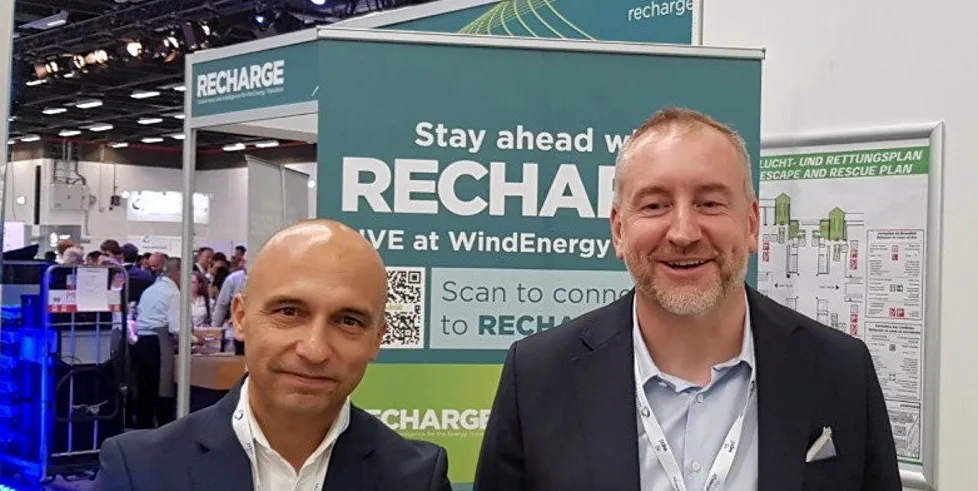'Time to step up' | Skyborn chief eyes offshore wind lift-off with GIP financial firepower
EXCLUSIVE INTERVIEW | Achim Berge tells Recharge newly rebranded company with 30GW pipeline eyeing new markets such as Indonesia and plans role in German tenders

“The approach is really to combine the legacy, the knowledge, the competence of the Wpd offshore team with the experience, and the financial capabilities of GIP as a shareholder. With this combination we can step up the entire organisation,” Berge said in his first interview as Skyborn CEO.
As a family-owned, mid-sized player, Wpd for years had been an exception in the offshore wind development sphere that is dominated by giant global utilities such as Iberdrola, oil & gas supermajors like Shell or financial heavyweights such as Copenhagen Infrastructure Partners (CIP).
“But now was the time to step up with a new shareholder and to be able to extend the organisation, to truly take a new growth path. GIP has lots of experience, what they do is to grow companies, put effort and resources into them to become bigger and more successful.”
Money will obviously not be unconditional, but will be available if projects are good, he added.
As long as a profitable business case can be expected, the new ownership set-up will allow the company to be “looking at different markets where we are not present today, or where we can easily move into,” Skyborn’s chief financial officer João Metelo added.
Indonesian load centres
One such new market could be Indonesia – a country with more than 275 million potential power consumers spread over an archipelago of more than 17,000 islands, whose waters so far a virgin territory for offshore wind.
“It is a big country, there is big demand. They will have shifts in their load centres, because they are moving the capital of the country [from overpopulated Jakarta on the island of Java to Nusantara on thinly populated Borneo], all this is pretty interesting,” Berge said.
The CEO said Skyborn is looking to find different locations off Indonesia, but cautioned that developments in the world’s fourth most populous country are at a very early stage.
While it may still take a while until projects in the Southeast Asian island nation take off, Skyborn is also active in several other promising markets in the Asia-Pacific region, among them Vietnam, Japan, South Korea, Australia, and most notably Taiwan, where it has the most advanced projects.
Taiwanese challenges
Skyborn meanwhile with Abu Dhabi’s National Petroleum Construction Company (NPCC) has found a new contractor for the job, which will try to finish monopile installation next year so that the wind farm can be operational in 2024.
Germany still a focus
Berge sees France and Sweden as other interesting markets and Germany as the company’s “home turf” where Skyborn has six projects, among them the 927MW Gennaker array in the Baltic Sea.
As Gennaker lies within coastal waters and not in Germany’s exclusive economic zone further offshore, the project did not have to take part in a tender, meaning the company’s already secured permit is sufficient to go ahead and build it. Skyborn won't receive state support, apart from a free grid connection, but will be able to sell the electricity it generates directly on wholesale power markets or to corporative clients.
More projects are slated to be added to the domestic pipeline.
“We will always concentrate on the German market and participate in upcoming tenders,” Berge said.
Nordic noir
It is yet unclear, whether the municipal council will follow the non-binding public vote and issue a municipal veto. But Berge said as the municipality so far had backed the project, it is unlikely it will withdraw its support now.
Also, the referendum would only affect the extension of Storgrundet to 1GW, while the company holds an already valid permit for first 665MW project.
Söderhamn may also not act in its own interest if it were to reject the extension plan as it comes with a special local tax for the municipality as well as the option to combine the gigascale project with the production of green hydrogen made from green power via electrolysis, Berge pointed out.
The CEO despite the trouble affecting Storgrundet still sees the Swedish market “very positively” as the Nordic country has rapidly rising power needs, particularly to the North, where Skyborn’s projects are located.
“They will need more wind power in order to keep the electricity price down,” Berge said, adding that load centres in Sweden are shifting to the North, where the mining industry, server stations, as well as the wood, paper and steel industries are located.
“They will all change to electricity as major energy source. So there is a big demand for electricity in the North.”
(Copyright)